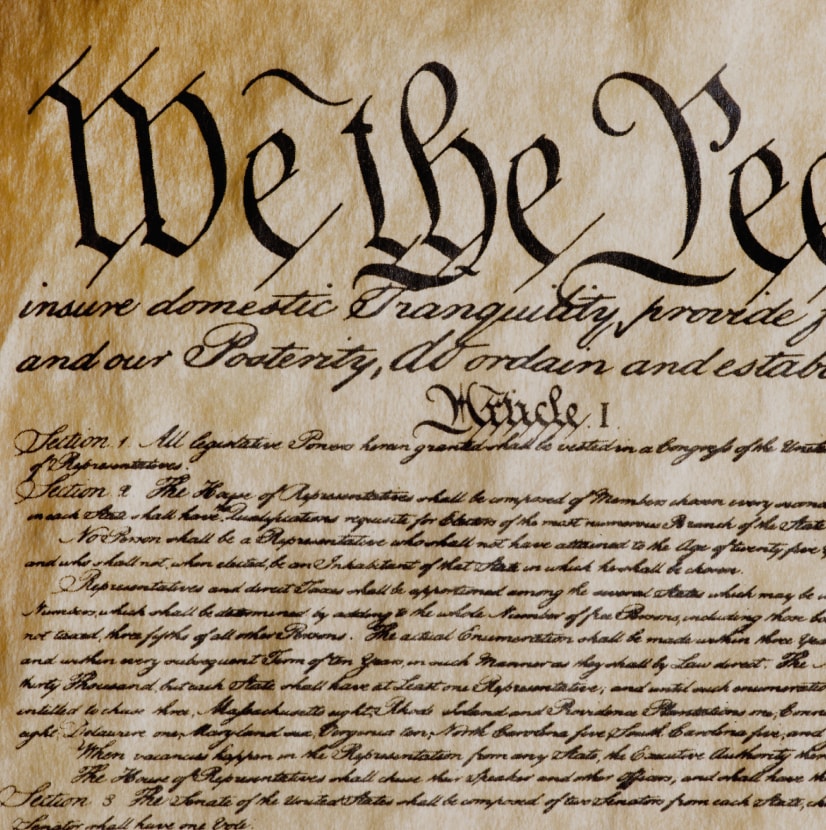Article V
Amending the
Constitution

Article V
Amending the Constitution
Amending the Constitution of the United States is no small task, and rightfully so. The rules for amending the document are housed within the document itself, in Article V.
Article V reads as follows:
The Congress, whenever two thirds of both houses shall deem it necessary, shall propose amendments to this Constitution, or, on the application of the legislatures of two thirds of the several states, shall call a convention for proposing amendments, which, in either case, shall be valid to all intents and purposes, as part of this Constitution, when ratified by the legislatures of three fourths of the several states, or by conventions in three fourths thereof, as the one or the other mode of ratification may be proposed by the Congress; provided that no amendment which may be made prior to the year one thousand eight hundred and eight shall in any manner affect the first and fourth clauses in the ninth section of the first article; and that no state, without its consent, shall be deprived of its equal suffrage in the Senate.
As we can see here, there are two methods for proposing an amendment to the Constitution, and two methods of ratifying the amendment.
Proposing an amendment
The United State Congress
The first method requires that two-thirds of the House and two-thirds of the Senate vote to propose a particular amendment. This method has been the only method used to amend the Constitution since the Bill of Rights.
The States
The second method requires that two-thirds of the states apply for a convention at which amendments can be proposed. While this application process has never taken place before in our history, there is certainly a precedent for a convention of the states, namely the Philadelphia Convention which created the Constitution.
Ratifying the amendment
Three-fourths of the states must ratify the proposed amendment in order for it to become part of the Constitution. Article V prescribes two methods in which an amendment may be ratified, either through the state legislatures or through state ratifying conventions, and the United States Congress may decide which method will be used.
The Archivist of the United States has the responsibility of administering the ratification process and will send notice to the states when an amendment has been proposed. Each state will then have the opportunity to ratify the amendment, using the method prescribed, and will send a certified copy of the action taken back to the Archivist.
Once the Archivist has collected certifications of ratification from three-fourths of the states, they will issue a certificate proclaiming the amendment duly ratified and part of the Constitution.
Stay updated and informed on term limits
We will process the personal data you have supplied in accordance with our privacy policy.